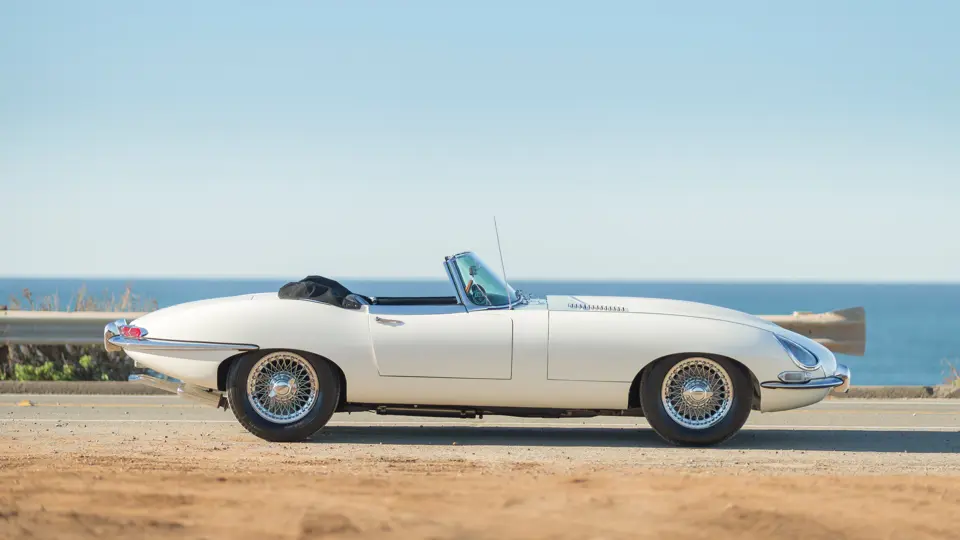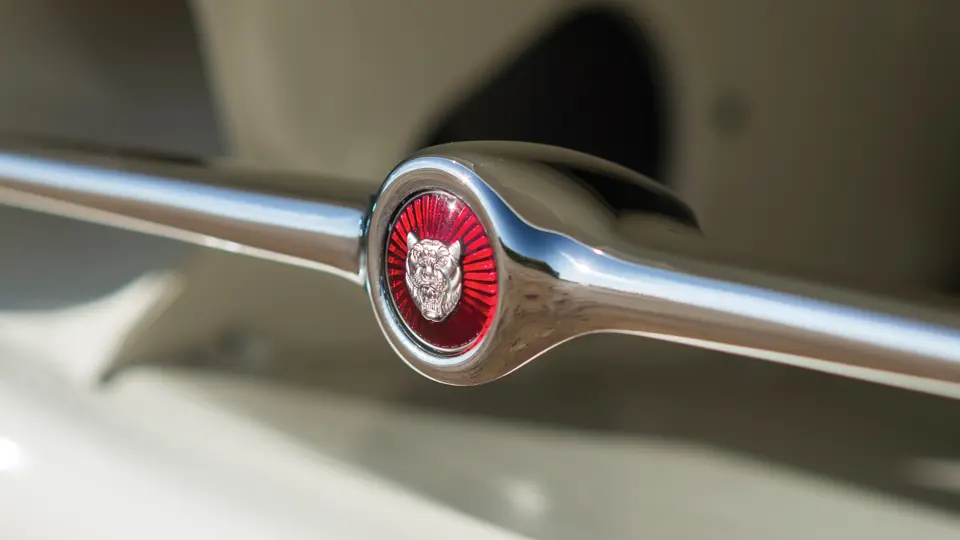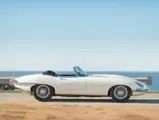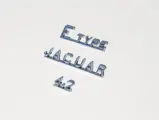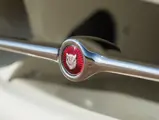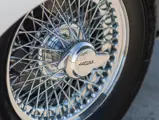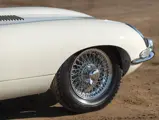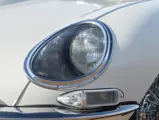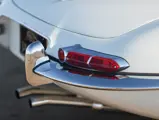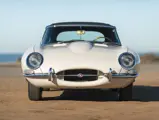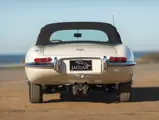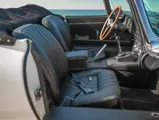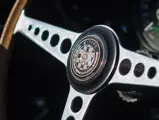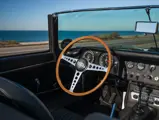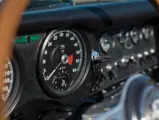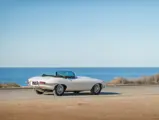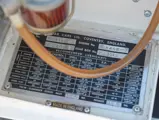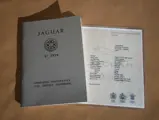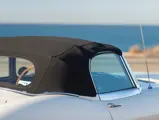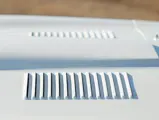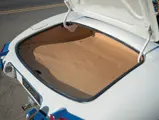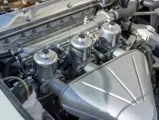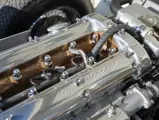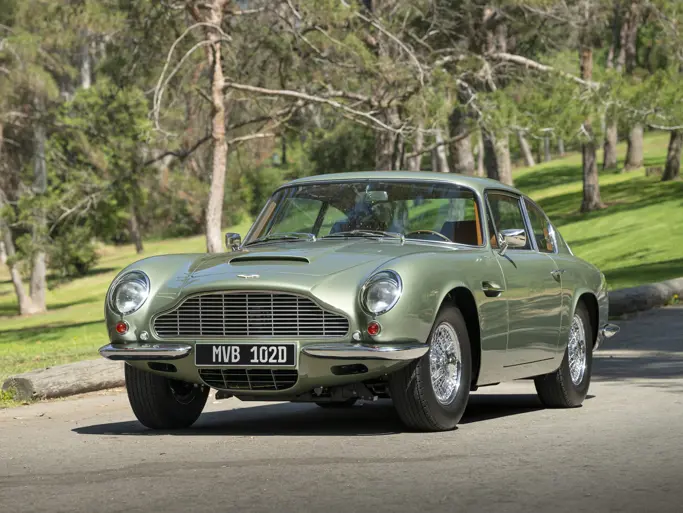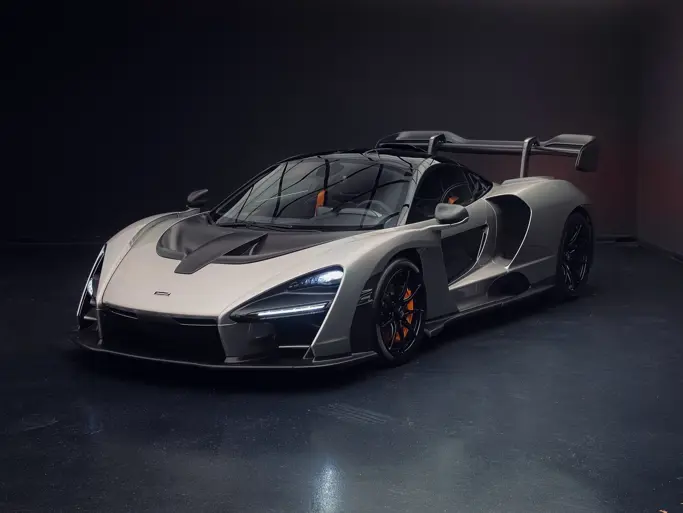265 bhp, 4,235 cc DOHC inline six-cylinder engine with triple SU carburetors, four-speed manual transmission, independent front suspension with transverse wishbones, torsion bars, telescopic shocks, and an anti-roll bar, independent rear suspension with lower transverse tubular links and twin coil springs, and four-wheel Dunlop twin-circuit hydraulic disc brakes. Wheelbase: 96 in.
Jaguar’s E-Type debuted to universal applause at the March 1961 Geneva Motor Show, but further development continued, and for the 1965 model, the gearbox was given full synchros while the seat backs were made adjustable. A new brake booster was also adopted, and the engine was enlarged to 4.2 liters, resulting in greater torque, which made for better tractability in everyday driving.
The car retained its pure form, with no external changes being made, but it was now more comfortable and responsive on the road. Road & Track enthused that it was “possible to drive at 15 mph in fourth gear without jerking or back-lashing,” all the while achieving up to 21 mpg. But for many, its greatest asset was that it looked the part and that nothing else looked like it. Whether labeled E-Type or XK-E, as it was sold in the United States, it made a statement about its owner and all who rode in it.
Not long afterward, the onslaught of safety and emissions regulations began having their way with the E-Type, resulting in the alteration of both its appearance and its performance. For this reason, these Series 1 cars, built from 1961 to 1966, are most highly prized.
The 1965 roadster on offer is a later 4.2-Litre model with the all-new synchromesh gearbox and more comfortable seats than on earlier examples, while retaining the covered headlights and thin side-lights and taillights that are considered most desirable. Built on June 15, 1965, it was sold through Jaguar’s New York distributor to Virginia Miller Downey.
The car recently received an extensive, no-expense-spared, bare-metal restoration from Jaguar professionals at Classic Showcase in Oceanside, California, in its original colors of white over a black leather interior with a black canvas top. During the restoration, the body was properly prepared, block-sanded, painted, wet-sanded, and buffed. In the course of a complete mechanical rebuild, the engine was blueprinted and balanced and the suspension overhauled with all-new bushings and ball joints. New brakes were fitted, while the fuel system and cooling system were overhauled, and all electrical parts were rebuilt or replaced as necessary. A new Connolly leather interior was installed along with a new canvas top and boot and all-new rubber seals. The car is fitted with a Blaupunkt AM/FM radio. Further, the accompanying Jaguar Daimler Heritage Trust certificate confirms the car retains its original engine.
This well-sorted Series 1 roadster includes an accompanying file of work orders, invoices, and a DVD documenting the restoration. The new owner can choose between a concours career for this elegant Jaguar or enthusiastic participation in numerous tours and rallies—or perhaps both.




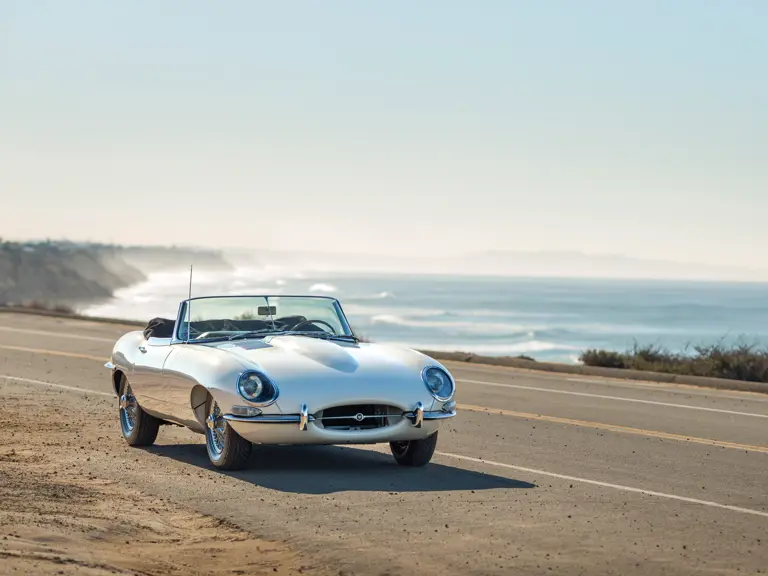
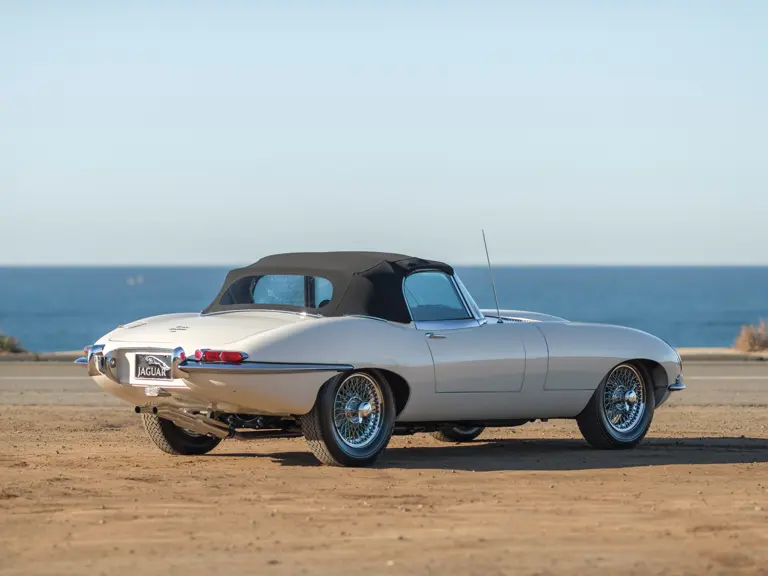
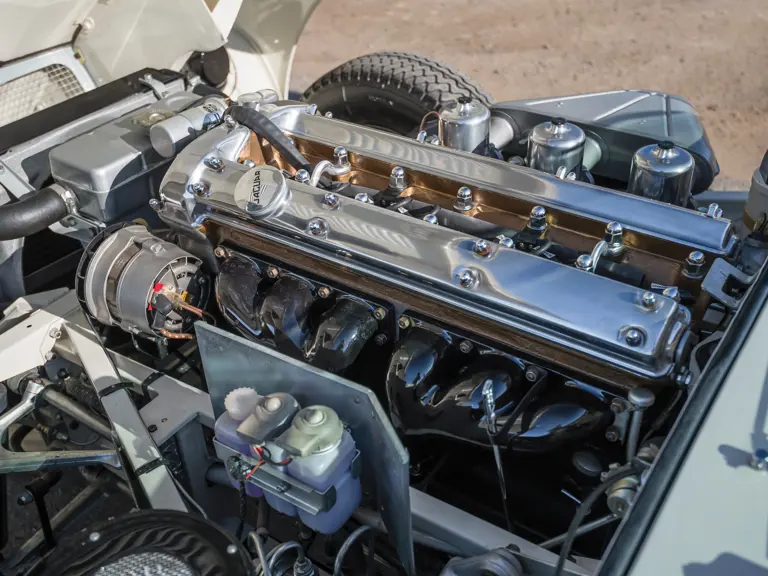
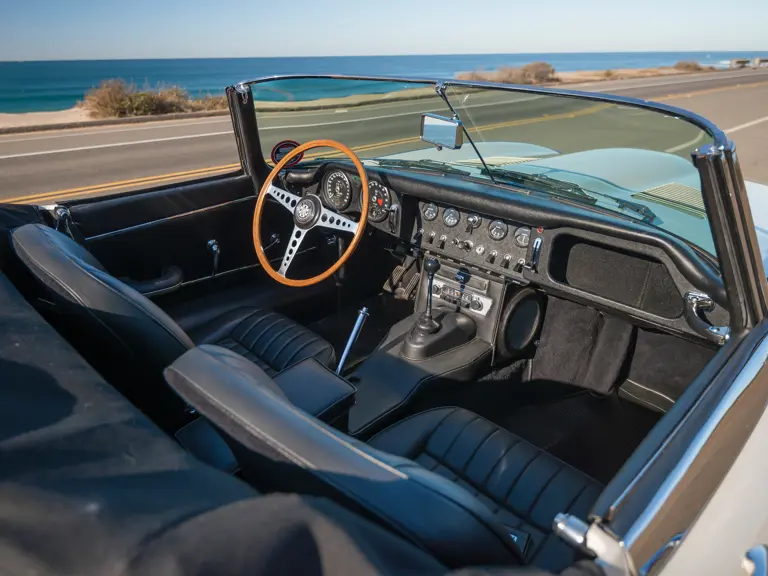
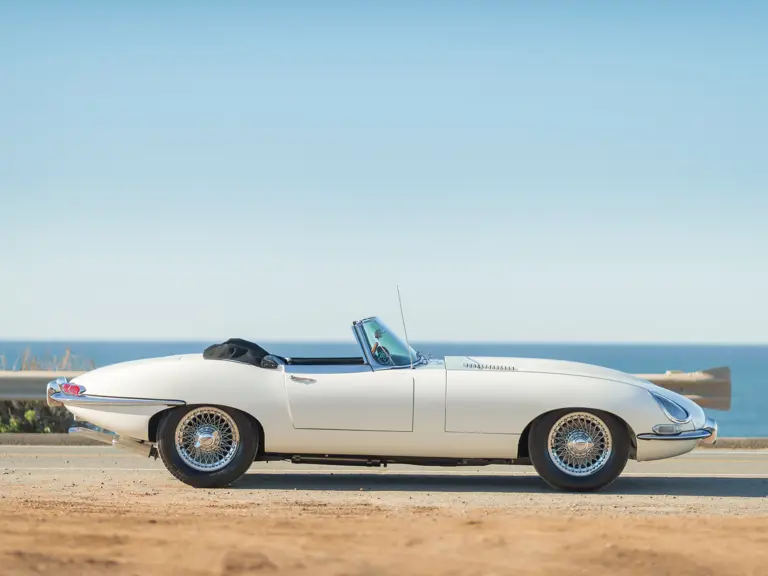
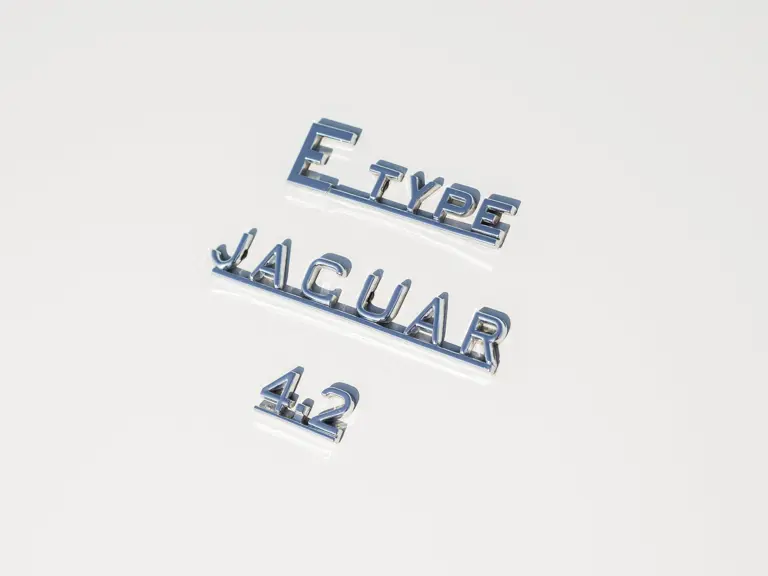
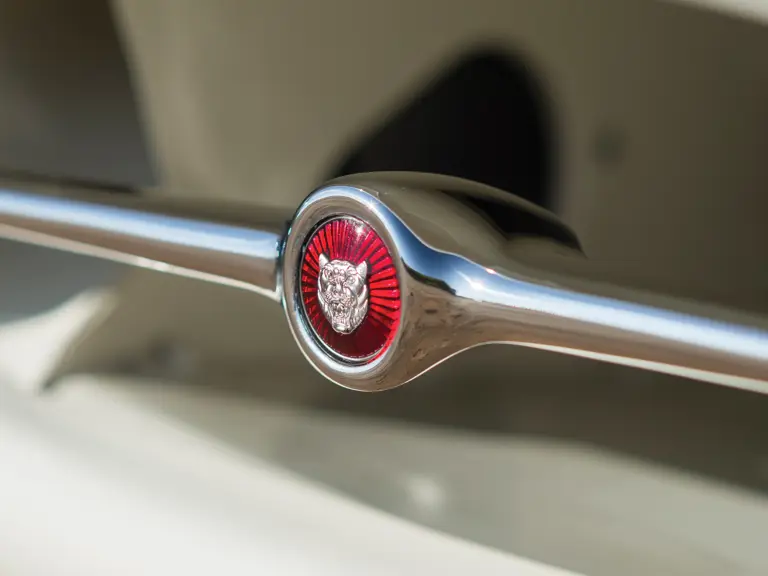
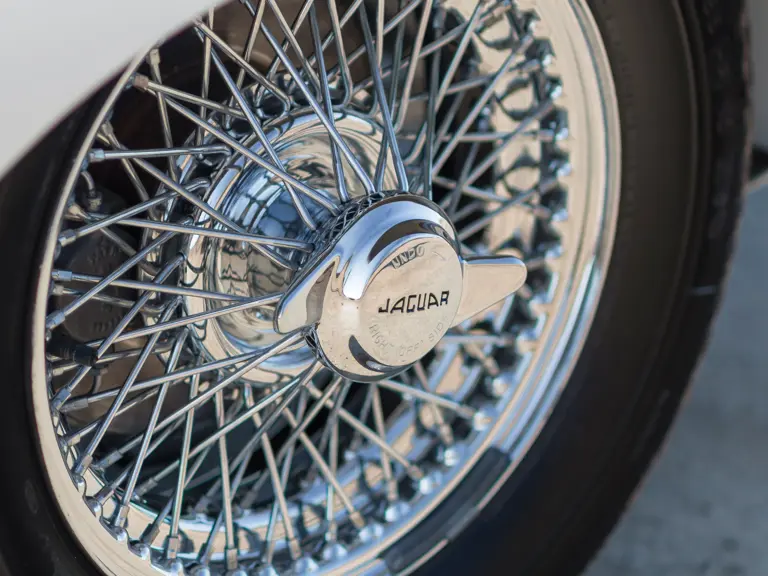
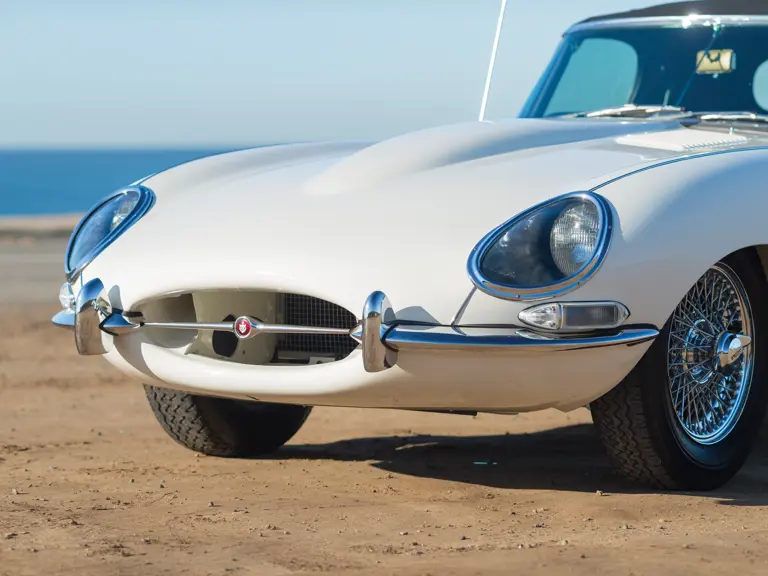
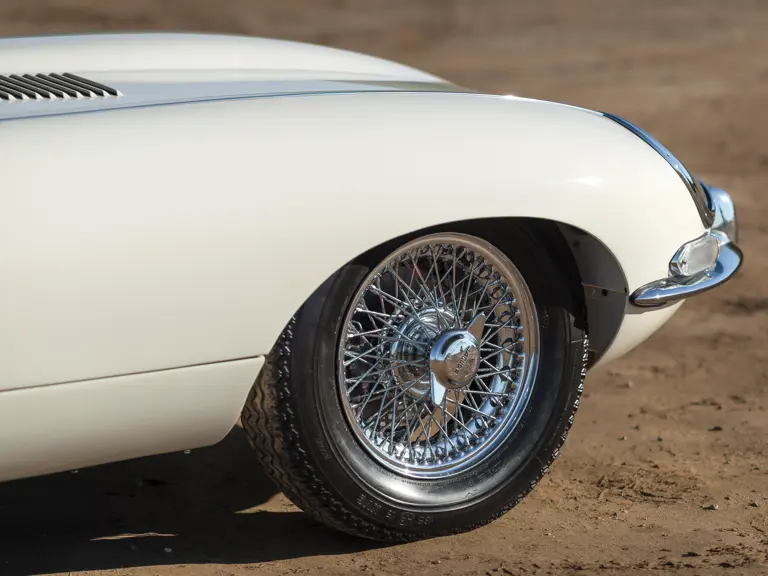
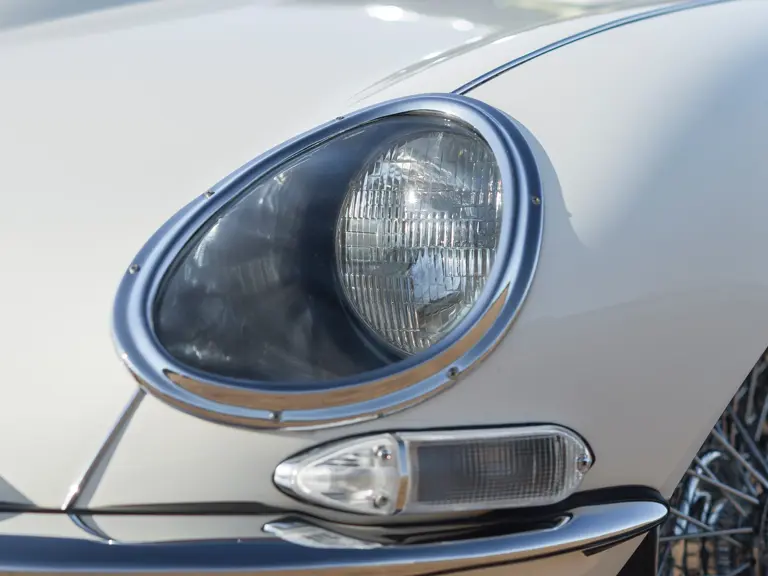
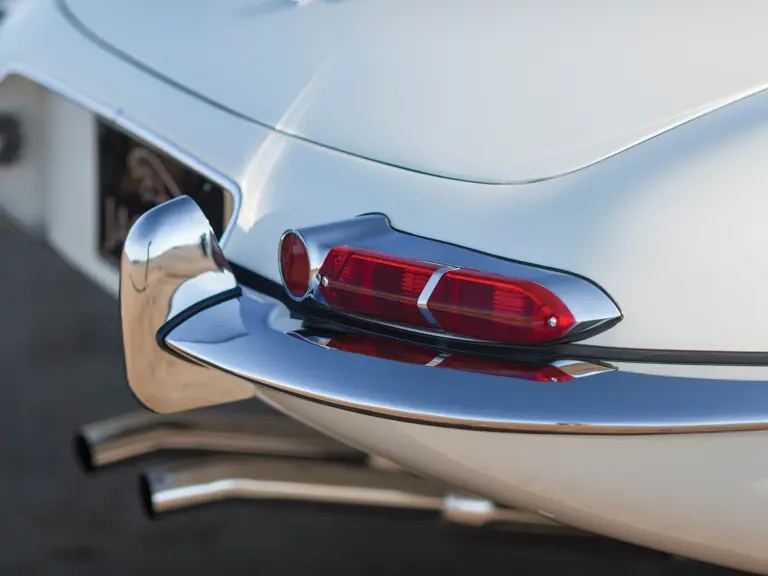
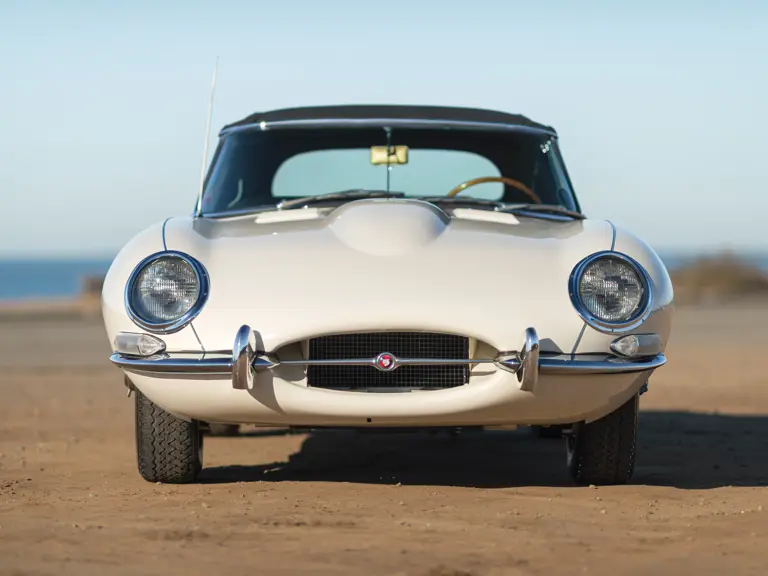
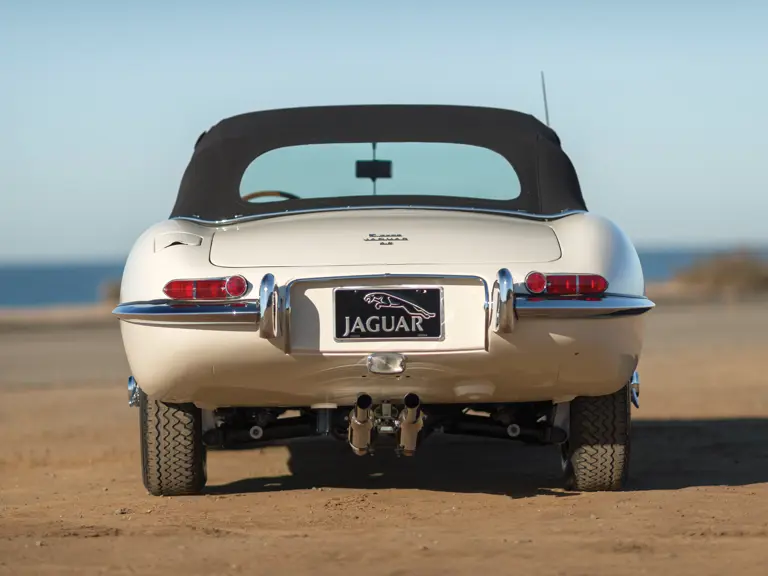

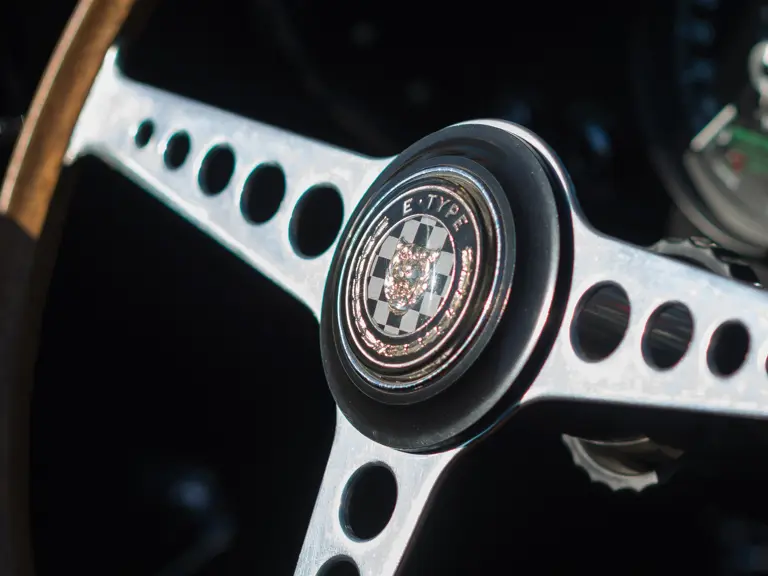
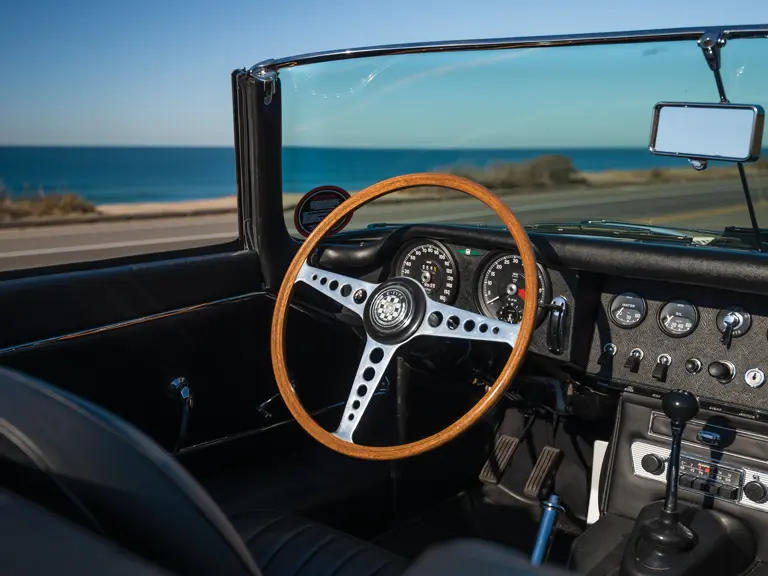

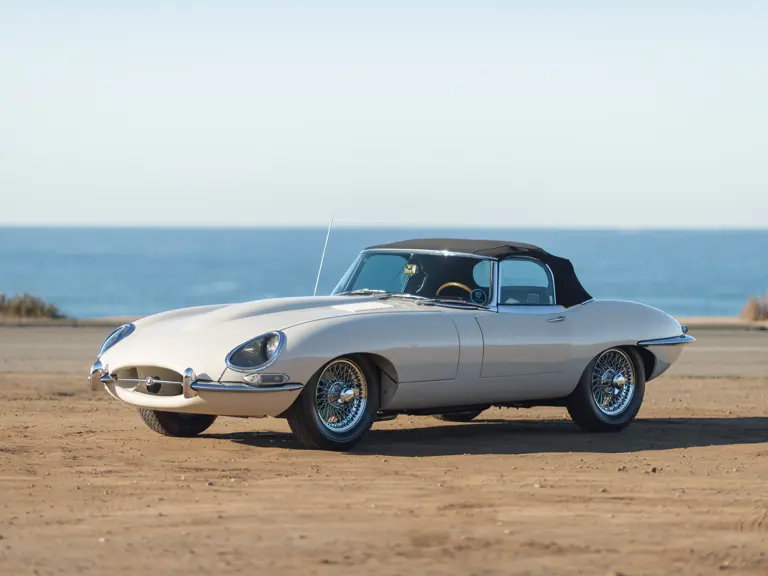
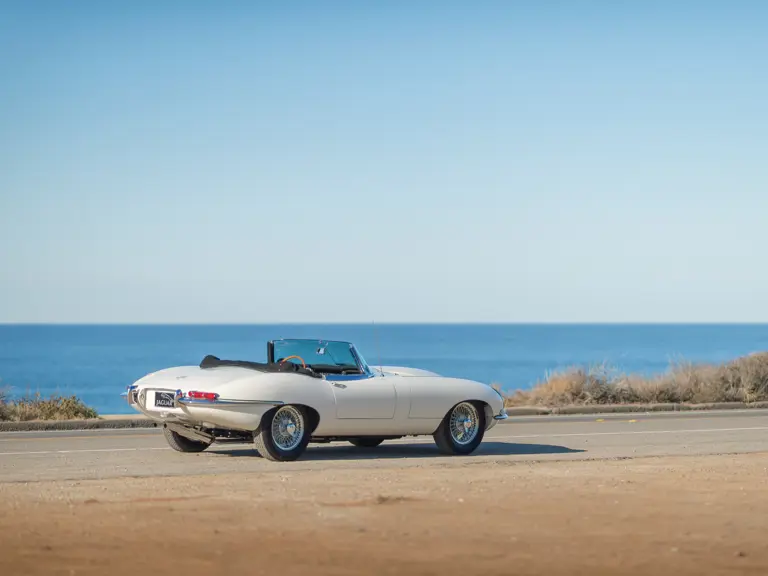

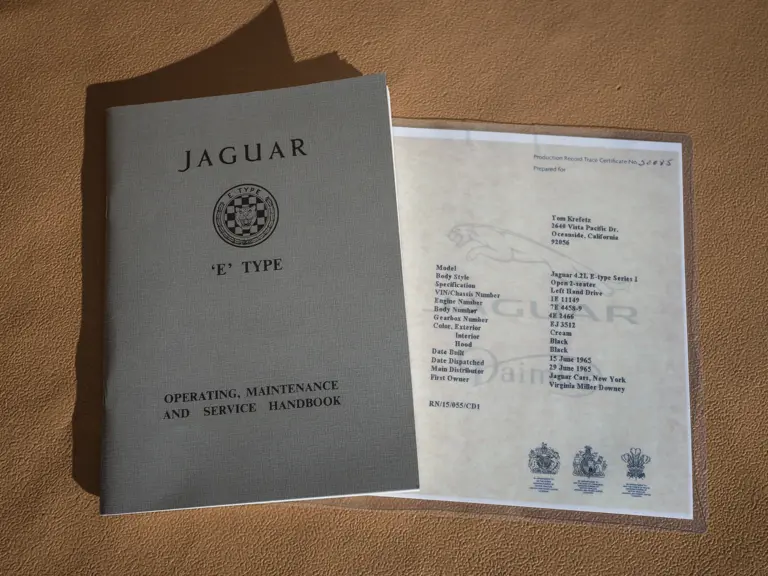

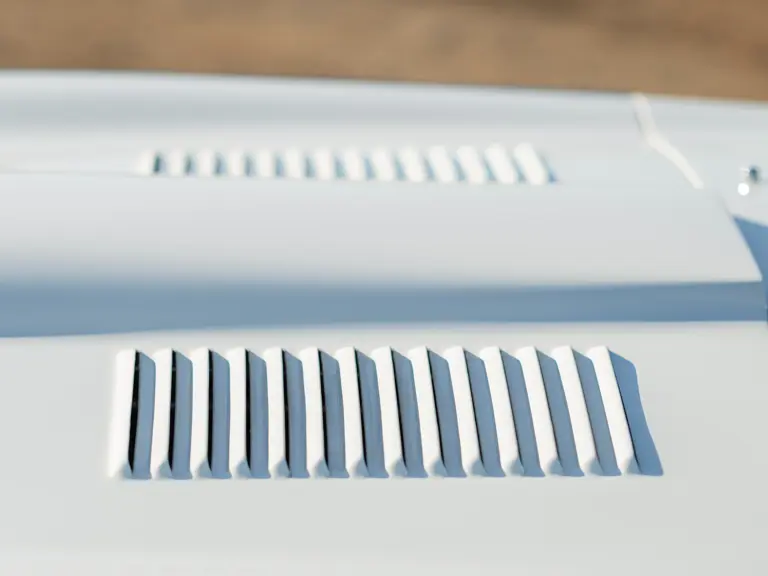
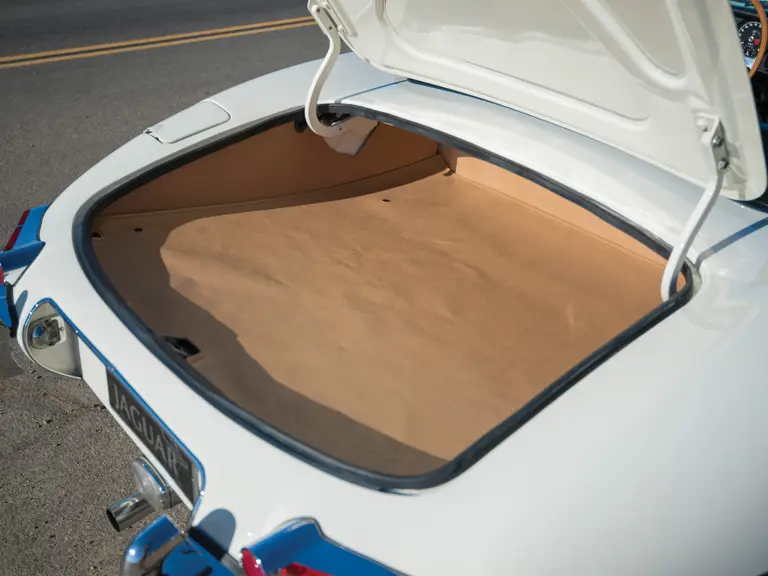
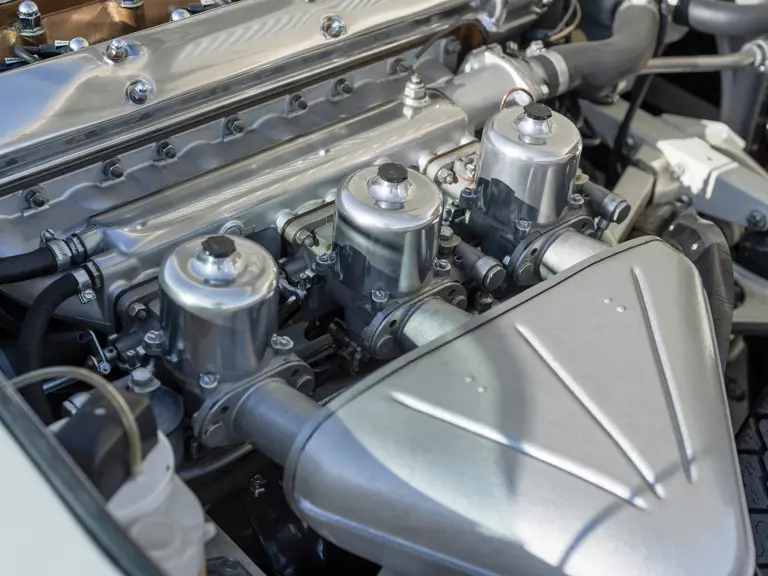
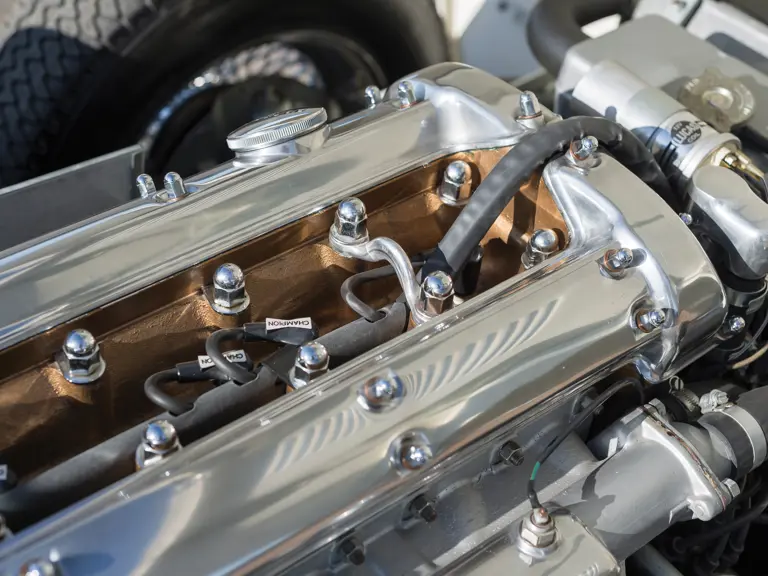
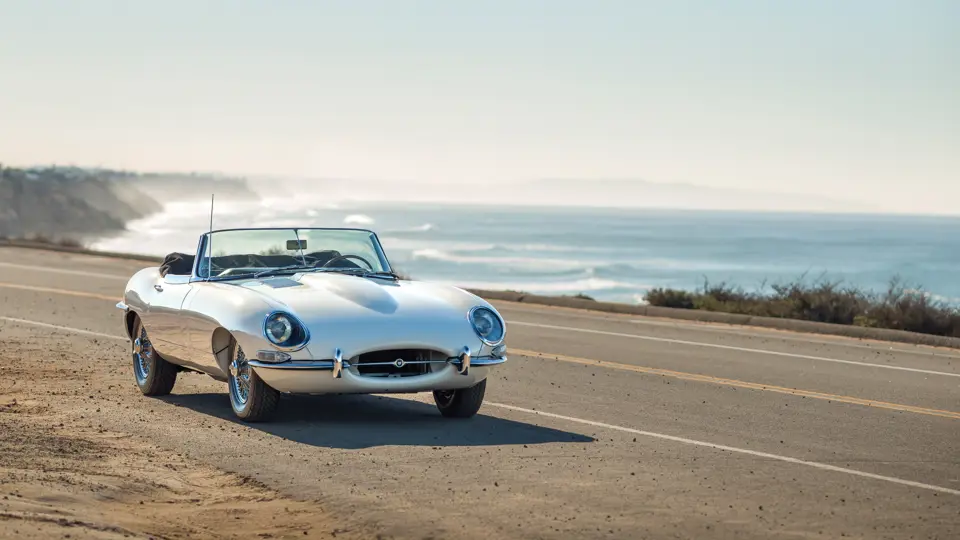
 | Amelia Island, Florida
| Amelia Island, Florida
